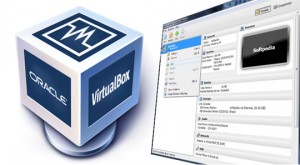by Gyro
Today I had a classic example of what happens when you do not RTFM. I had to install ImageMagick on a webserver running CentOS 5 with cPanel. First I simply ran "yum install imagemagick", which did install ImageMagick just fine.
Now, the reason I had to install it was to do a batch resize of about 20,000 images and place the resized images in a new directory. So I did:
# mogrify -resize 250 -quality 70 -path /home/somesite/public_html/image/thumbs/ -format jpg /home/somesite/public_html/images/*
To my surprise I got the error message:
mogrify: unrecognized option `-path'.
After a quick google search, I realized that yum installed a super old version that was not supporting the -path option?!
So, after some more searching, I found this great guide on how to Install ImageMagick 6.6.5 and followed the instructions. But when I got to the final installation command, I got a dependencies error?!
After another google search, I came across a forum post saying "Make sure that RPMForge repository is installed first, and then everything works."… and when I looked back at the guide, I realized that it did in fact tell me to do that. The reason I did not see it was because it was a one liner with a link to another website, and I was expecting to be able to simply copy paste commands, so I skipped reading that line. I did not RTFM properly…
So, to make it easy for the future, I will combine these two pages, in order to have a step by step set of instructions without having to go to another website 
Before starting, make you sure you know whether you are using a 32-bit or 64-bit system.
# uname -i
x86_64 would be 64-bit
OK, here we go!
1. Uninstall ImageMagick
# rpm -e --nodeps ImageMagick.i386 ImageMagick-devel.i386 ImageMagick.x86_64 ImageMagick-devel.x86_64
this actually didn't work for me, so I did:
# yum remove imagemagick
2. Add the EPEL repository to yum:
CentOS 6:
# rpm -Uvh http://dl.fedoraproject.org/pub/epel/6/i386/epel-release-6-8.noarch.rpm
CentOS 5:
# rpm -Uvh http://dl.fedoraproject.org/pub/epel/5/i386/epel-release-5-4.noarch.rpm
3. Download and Install RPMforge (Check here for newer version.)
CentOS 6:
Download RPMforge for 32-bit systems: rpmforge-release-0.5.3-1.el6.rf.i686.rpm
# wget http://pkgs.repoforge.org/rpmforge-release/rpmforge-release-0.5.3-1.el6.rf.i686.rpm
Download RPMforge for 64-bit systems: rpmforge-release-0.5.3-1.el6.rf.x86_64.rpm
# wget http://pkgs.repoforge.org/rpmforge-release/rpmforge-release-0.5.3-1.el6.rf.x86_64.rpm
Install DAG's GPG key:
# rpm --import http://apt.sw.be/RPM-GPG-KEY.dag.txt
If you get an error message like the following the key has already been imported:
error: http://apt.sw.be/RPM-GPG-KEY.dag.txt: key 1 import failed.
Verify the package you have downloaded:
# rpm -K rpmforge-release-0.5.3-1.el6.rf.*.rpm
Install RPMforge:
# rpm -i rpmforge-release-0.5.3-1.el6.rf.*.rpm
CentOS 5:
Download RPMforge for 32-bit systems: rpmforge-release-0.5.3-1.el5.rf.i386.rpm
# wget http://pkgs.repoforge.org/rpmforge-release/rpmforge-release-0.5.3-1.el5.rf.i386.rpm
Download RPMforge for 64-bit systems: rpmforge-release-0.5.3-1.el5.rf.x86_64.rpm
# wget http://pkgs.repoforge.org/rpmforge-release/rpmforge-release-0.5.3-1.el5.rf.x86_64.rpm
Install DAG's GPG key:
# rpm --import http://apt.sw.be/RPM-GPG-KEY.dag.txt
If you get an error message like the following the key has already been imported:
error: http://apt.sw.be/RPM-GPG-KEY.dag.txt: key 1 import failed.
Verify the package you have downloaded
# rpm -K rpmforge-release-0.5.3-1.el5.rf.*.rpm
Install RPMforge
# rpm -i rpmforge-release-0.5.3-1.el5.rf.*.rpm
4. Install dependencies for ImageMagick 6.6
For 32-bit systems:
# yum install djvulibre OpenEXR jasper ghostscript librsvg2 libwmf libtool-ltdl
For 64-bit systems:
# yum install djvulibre OpenEXR jasper ghostscript librsvg2.x86_64 libwmf.x86_64 libtool-ltdl.x86_64
Systems running CentOS 6 will need the old version of libtool-ltdl installed:
For 32-bit systems:
# rpm -ivh --force ftp://ftp.muug.mb.ca/mirror/centos/5.9/os/i386/CentOS/libtool-ltdl-1.5.22-7.el5_4.i386.rpm
For 64-bit systems:
# rpm -ivh --force ftp://ftp.muug.mb.ca/mirror/centos/5.9/os/x86_64/CentOS/libtool-ltdl-1.5.22-7.el5_4.x86_64.rpm
5. Download and Install ImageMagick 6.6.5
Download for 32-bit systems: ImageMagick-6.6.5-10.i386.rpm
# wget http://www.lassosoft.com/_downloads/public/Lasso_Server/CentOS-Extra/ImageMagick-6.6.5-10.i386.rpm
Download for 64-bit systems: ImageMagick-6.6.5-10.x86_64.rpm
# wget http://www.lassosoft.com/_downloads/public/Lasso_Server/CentOS-Extra/ImageMagick-6.6.5-10.x86_64.rpm
Install ImageMagick
# rpm -ivh ImageMagick-6.6.5*
DONE! 
9729
![]()



